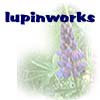Self As Informant is a self-directed Workshop
consisting of a number of activities which are laid out
so that you can explore and reflect on what you do when
you read.
Research into reading as a constructive activity
began in middle 1960s with the work of Kenneth Goodman.
In 1968 he published a book The Psycholinguistic Nature
of the Reading Process in which he laid out an argument
explaining what he called "reading miscues."
At about the same time (1969) there was another breakthrough
article in the Reading
Research Quarterly by
Ryan and Semmel: Reading as a constructive language
process which reviewed a wide array of research
and demonstrated the cognitive processes involved in reading.
In 1971, Frank Smith published the first edition of Understanding
Reading in which he developed an extensive argument
based on the then available research on a wide range of
topics including eye-movement studies, error detection,
and language development. He showed that reading had to
be a complex constructive process based on more than just
the information from the print on the page; in order to
read, he argued, readers had to rely heavily on what he
called "non-visual" information in order to construct
meaning.
In the late 60s Edmund Huey's 1908 book: The Psychology
and Pedagogy of Reading was rediscovered. His early
experiments were actually the first evidence that reading
was a constructive activity.
These and other important works made it clear that reading
involved a lot more than just discriminating letters
and words (pattern recognition) and translating/associating
them with speech (decoding).
These Self As Informant activities will revisit
these ground breaking arguments and allow you to discover
for yourself the complexity of reading. Start with Activity
1 and work your way through the various activities systematically.
By the end you'll have had some very interesting insights
into what happens when you read.

